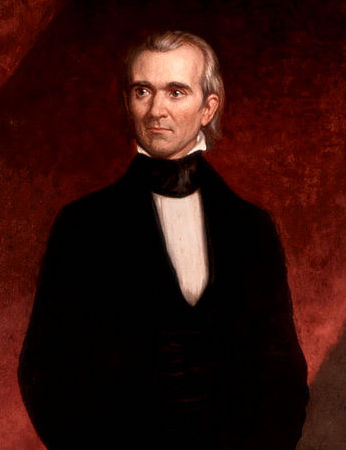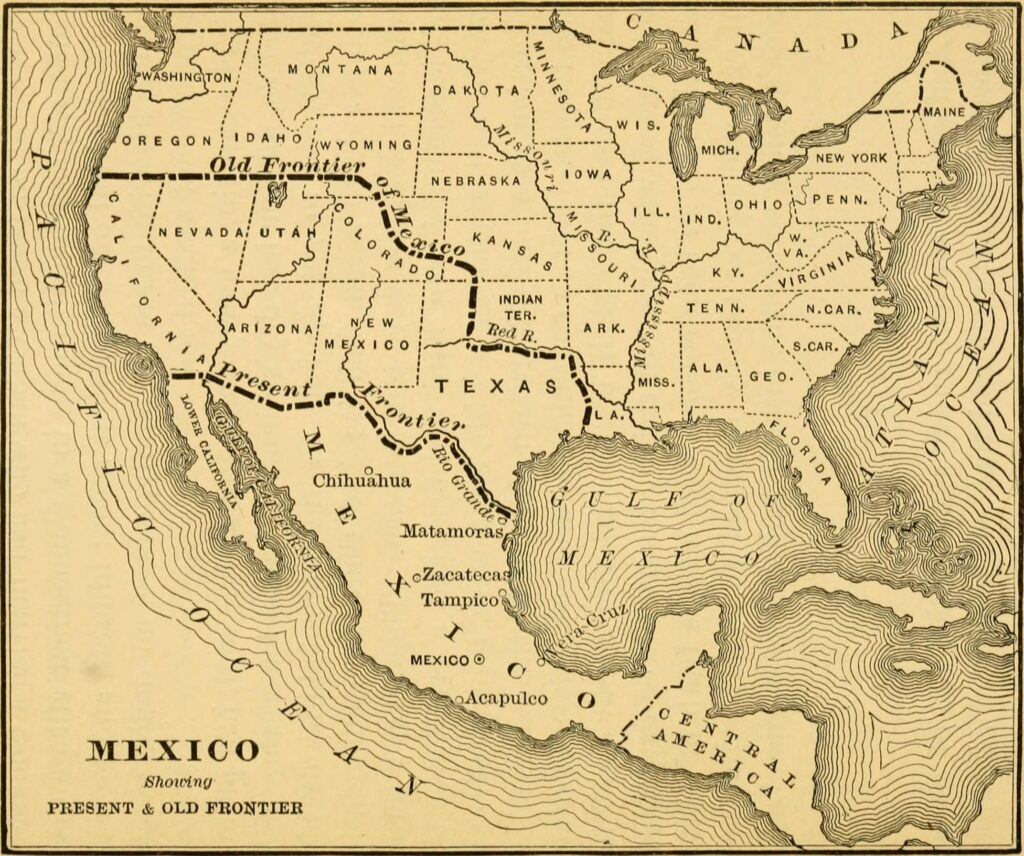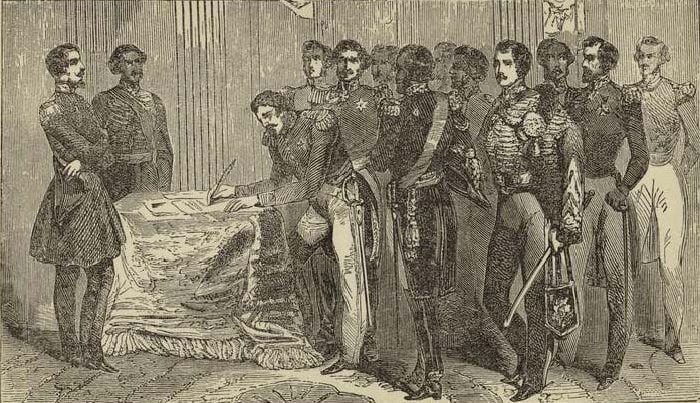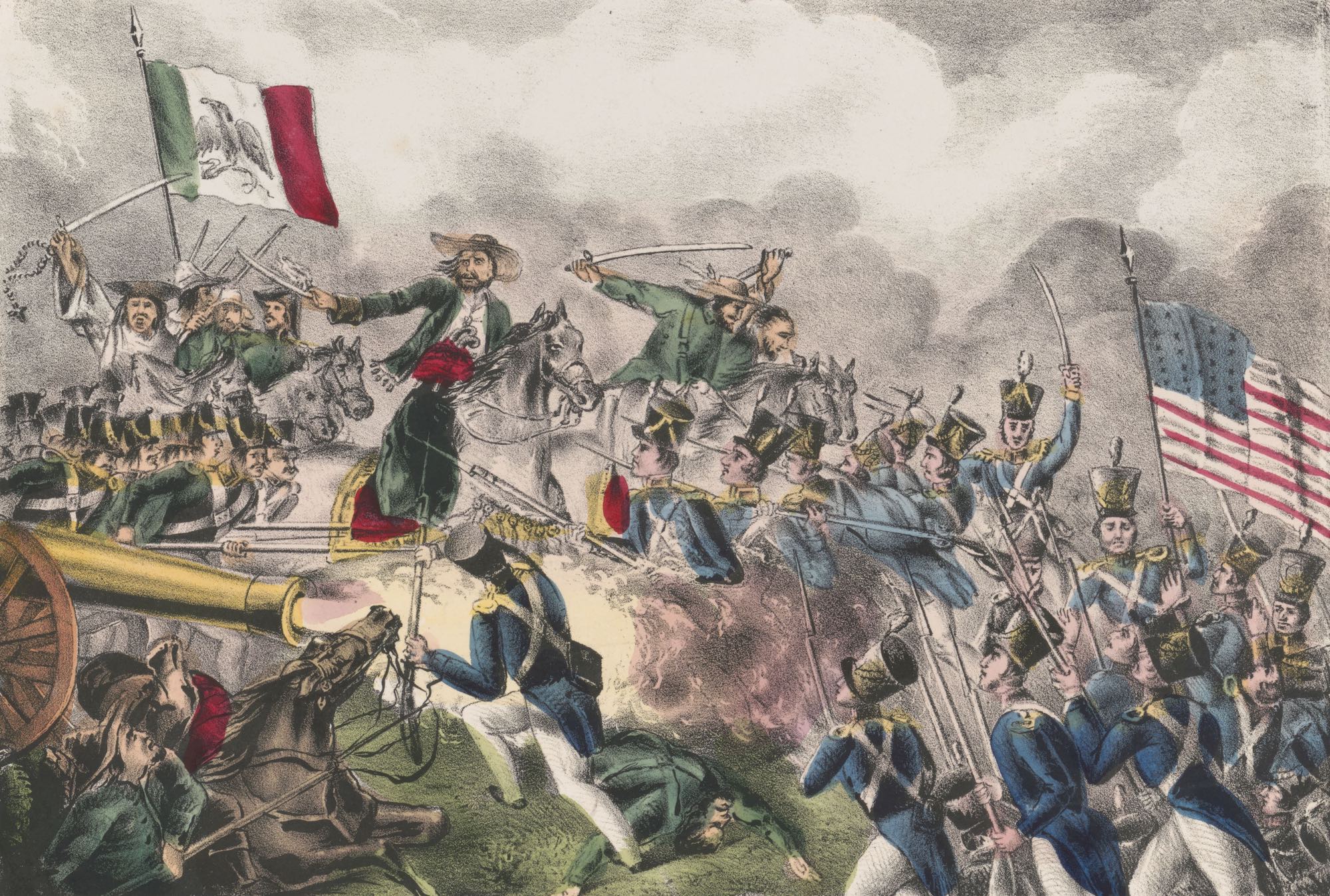El Norte Didn’t Cross Us—They Took It
Si te han dicho alguna vez “Go back to where you came from,” it’s time to set the record straight: Mexicans didn’t cross the border—the border crossed us. Desde California hasta Texas, this was all México until the U.S., drunk on Manifest Destiny, straight-up stole it.
What happened in the 19th century wasn’t some “peaceful expansion”—it was an invasion, a war fueled by greed and white supremacy, ending with the Treaty of Guadalupe Hidalgo, which stripped México of 55% of its territory (Pletcher, The Diplomacy of Annexation).
Now, the descendants of the very people that lived on this land for generations are treated like intruders, told we don’t belong. Pero let’s talk about how it all happen, the injustices México suffered, and why this history is ours to tell.
The Lead-Up: Texas, Slavery, and the U.S. Agenda
México declared its independence from Spain in 1821, claiming vast lands in the north—including Texas (Library of Congress). But with barely any population, el gobierno Mexicano allowed U.S. settlers to come in under the empresario system. Big mistake.
These settlers—mostly Southerners—didn’t just want land; they wanted slavery. But México had abolished slavery in 1829, so when the government tried to enforce that? The settlers got pissed. Fast forward to 1836, and Texas declares independence, kicking off the Texas Revolution (Texas State Historical Association).
México never recognized this so-called “independence,” and when the U.S. annexed Texas in 1845, it was game on. The war was coming. (PBS, U.S.-Mexican War).

White House Historical Association
The Mexican-American War (1846-1848): A War of Greed
El presidente James K. Polk was thirsty for more land. When México refused to sell California, he sent U.S. troops to the Río Grande, knowing it would provoke a fight. When México defended its territorio, Polk ran to Congress claiming “American blood has been shed on American soil” (Polk’s War Message to Congress, 1846).
What went down:
- 1846: The U.S. invades northern México, winning battles at Palo Alto and Resaca de la Palma (Library of Congress).
- 1847: U.S. forces take Mexico City by force (PBS, U.S.-Mexican War).
- 1848: México surrenders, signing the Treaty of Guadalupe Hidalgo, handing over half its land for just $15 million (National Archives).
Half a million square miles of México became U.S. land. Y lo peor? The promises made to Mexicans in those territories? Straight-up lies.

Manifest Destiny: The Ideology Behind Expansion
Manifest Destiny was more than a policy—it was a belief system that justified the subjugation of others in the name of progress. Coined by journalist John L. O’Sullivan in 1845, the term encapsulated the idea that Americans were destined to expand across the continent.
This ideology was deeply tied to notions of racial and cultural superiority. It ignored the rights of Indigenous peoples and Mexicans, viewing them as obstacles to progress. As Gloria Anzaldúa writes in Borderlands/La Frontera, “The U.S.-Mexico border is a wound where the Third World grates against the First and bleeds. And before a scab forms, it hemorrhages again, the lifeblood of two worlds merging to form a third country—a border culture.“
The Treaty of Guadalupe Hidalgo: A False Promise
The treaty promised Mexicans living in these territories could keep their land and gain U.S. citizenship (National Archives). Pero guess what?
- Land was stolen through legal fraud and intimidation (Weber, The Mexican Frontier).
- Mexicans were treated as foreigners in their own homeland (PBS, Latino Americans).
- Citizenship rights were denied or delayed for decades (Pew Research Center).
Fast-forward to today, and people are still shouting “Go back to Mexico”—even though this was always our land.

Mexican Contributions to the Ceded Territories
The Mexican population in the ceded territories became the foundation of the Mexican-American community. Their contributions to agriculture, infrastructure, and culture have left an indelible mark on the Southwest.
- Agriculture:
Mexican laborers were essential to the development of the agricultural economies of states like California and Texas. The bracero program (1942-1964) brought millions of Mexican workers to the U.S., many of whom settled in the Southwest. According to the U.S. Department of Agriculture, Mexican laborers remain crucial to the success of American agriculture, particularly in states like California. - Infrastructure:
Mexican workers helped build railroads, highways, and cities in the Southwest. For example, they played a key role in constructing the Transcontinental Railroad in the 19th century. Learn more about their contributions here. - Cultural Landmarks:
Cities like Los Angeles, San Antonio, and Santa Fe retain strong Mexican cultural influences. Olvera Street in Los Angeles, a historic Mexican marketplace, is a testament to this enduring legacy. Explore more about Olvera Street here.
“Mexican-Americans have always been the backbone of this country, working in the fields, building the roads, and fighting for justice. Our contributions are woven into the fabric of America” – Dolores Huerta
Mexican Influence in America Today
Today, Mexican-Americans and Mexican immigrants are vital to the U.S., contributing to its economy, culture, and society.
- Demographics:
Mexican-Americans are the largest Hispanic group in the U.S., comprising over 60% of the U.S. Latino population. States like California, Texas, Arizona, and New Mexico have significant Mexican-American populations. Learn more from the Pew Research Center. - Cultural Contributions:
- Language: Spanish is the second most spoken language in the U.S., with over 41 million native speakers.
- Cuisine: Mexican food, such as tacos, tamales, and guacamole, has become a staple of American cuisine.
- Music and Arts: Traditions like mariachi, Día de los Muertos, and muralism have enriched American culture.
- Economic Impact:
According to the Pew Research Center, Hispanic workers, particularly those of Mexican origin, are a vital part of the U.S. economy, contributing to key industries and driving economic growth.
Why This History Still Matters
Esta historia is why anti-Latino policies still exist. The same U.S. that stole our land built a system to keep us out. Deportations, border walls, voter suppression—all connected to the original theft of 1848 (PBS, Latino Americans).
Every time they tell you to “go back,” remember: we never left.
Sources:
- Featured Image: E.B. & E.C. Kellogg. Battle of Cerro Gordo. April 18th. Mexico, 1847. [New York ; Hartford, Conn.: E.B. & E.C. Kellogg 144 Fulton St. N.Y. & 136 Main St. Hartford, Conn., Buffalo: D. Needham 223 Main St] Photograph. https://www.loc.gov/item/2003656455/
- Greenberg, Amy S. A Wicked War: Polk, Clay, Lincoln, and the 1846 U.S. Invasion of Mexico (Harvard Press).
- Pletcher, David M. The Diplomacy of Annexation: Texas, Oregon, and the Mexican War (Harvard Press).
- Weber, David J. The Mexican Frontier, 1821-1846 (UNC Press).
- Library of Congress (loc.gov).
- PBS, Latino Americans (pbs.org).
- National Archives, Treaty of Guadalupe Hidalgo (archives.gov).
- Texas State Historical Association (tshaonline.org).
- Pew Research Center (pewresearch.org).
- U.S. Department of Agriculture (usda.gov).









What do you think?
Show comments / Leave a comment